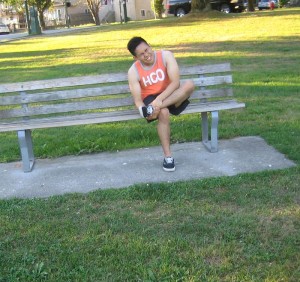It cannot be denied that blisters are quite common among those who regularly engage in sports. Many athletes simply accept them as a consequence of their activities but there are several measures that can help avoid blisters or reduce the pain and risk for infection if an individual develops one.
Causes of blisters
Blisters usually develop due to friction on the skin. This can occur due to the rubbing action on sports equipment or clothing on the upper skin layer or epidermis. Over time, continuous friction can cause the upper skin layer to separate from the second skin layer.
A warning indication that a blister is about to develop is warmth and redness on the skin which is called as a “hot spot”. This is followed by fluid that fills the space between the two upper skin layers to provide protection from the continuous rubbing. Once this occurs, there is a blister that appears similar to a small-sized bubble on the skin.
Many individuals develop blisters on the heels, palms of the hands and soles of the feet since they usually rub against socks, shoes or sports equipment. Take note that warm and moist conditions are ideal for the development of blisters.

Prevention of blisters
The best way to prevent blisters is to reduce the amount of friction on the skin. You can do this by wearing proper footwear that suitably fits. There are also some moisture-wicking socks that are made out of synthetic blends that can minimize friction and moisture on the skin of the feet. Some runners usually tape the toes or heels prone to blisters before a run to prevent the formation of blisters.
Even though band aids and other tape can be utilized, many athletes often utilize a small-sized strip of duct tape on trouble spots. Take note that duct tape stays in place for extended periods and the shiny back is smooth enough to slide on socks. Another option is to apply petroleum jelly or even talcum powder before exercise in order to minimize friction. On the other hand, these are only suitable for short runs.
If an individual is prone to blisters, he/she can keep a stash of blister prevention and treatment products. It is important to keep a small selection of blister aids in his/her bag, biking bag or even back pocket so that he/she can quickly act to any warning indications of a developing blister.
If the individual has any “hot spots” during activity, it is vital to apply right away to prevent the blister from developing. It is also vital to keep the feet dry or change socks regularly. If the individual cannot stop activity or change socks or shoes, the ideal option is to apply the right blister product to the sensitive area. A simple, fast and effective treatment is to apply a generous amount of petroleum jelly to the area to minimize friction. In some cases, the individual should reapply often.
